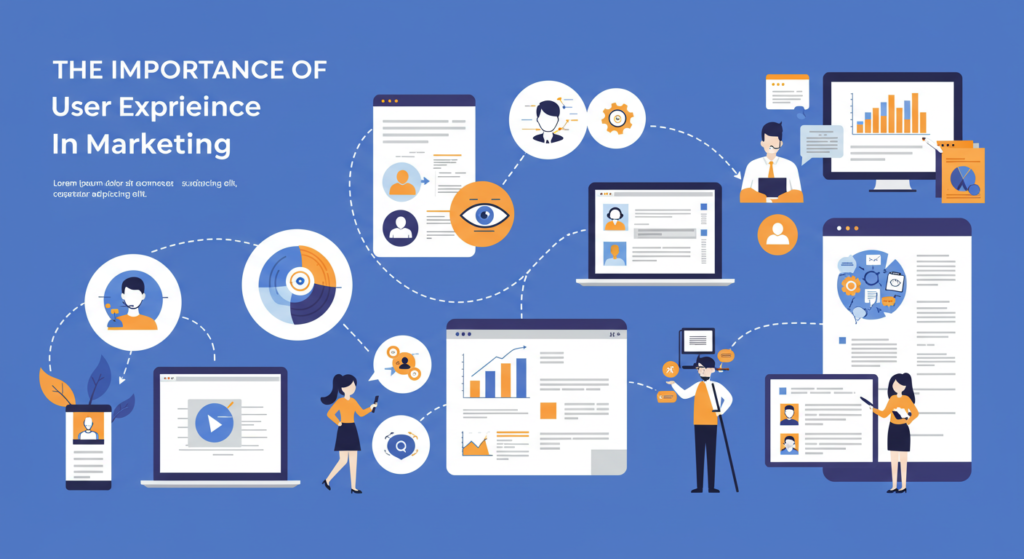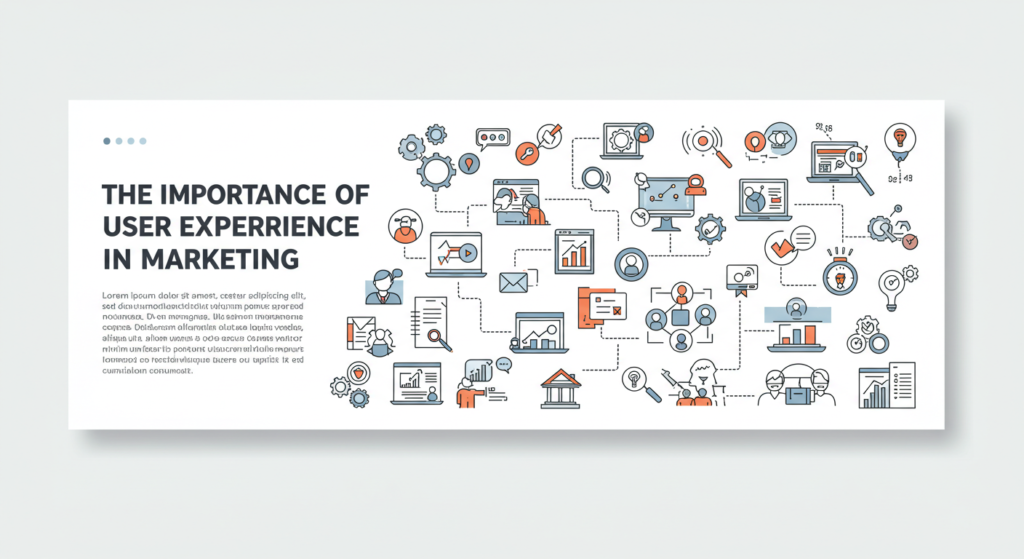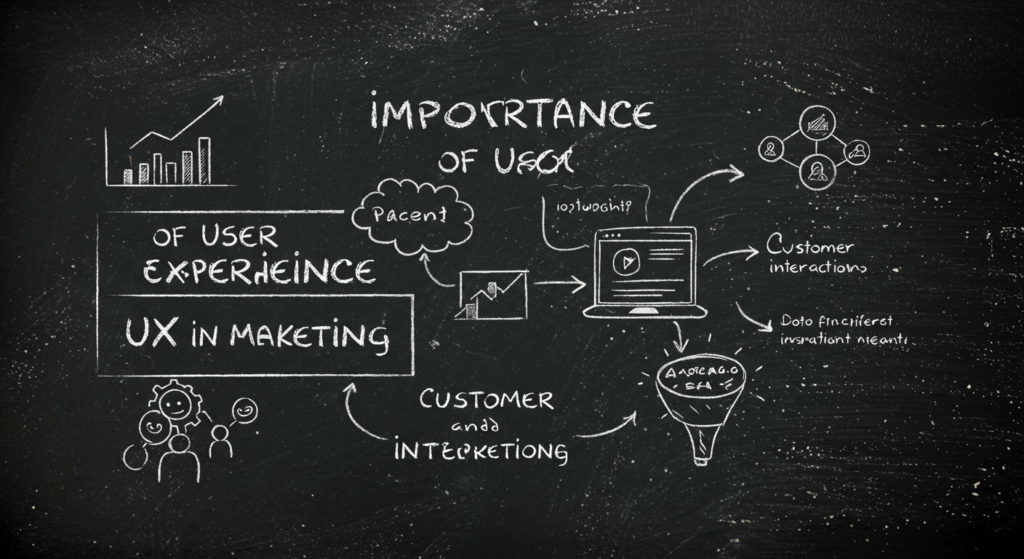
Understanding User Experience
User experience, also known as UX, is how people feel when they interact with your brand online. It’s more than just a pretty website—it’s the full user journey, from the first click to the final action.
Good user experience means your site is easy to use, fast, and helpful. It should guide people smoothly without making them confused or frustrated. If visitors can’t find what they need, they’ll leave—and likely never come back.
UX design focuses on how everything looks and works. The goal is to make your site or app simple, clear, and enjoyable to use. This improves the overall customer experience and builds trust.
When people enjoy using your platform, they’re more likely to take action—like buying, signing up, or sharing. That’s why UX is a major part of modern marketing. If your experience is poor, even great content won’t save you.
In today’s world, customers expect smooth experiences. If you’re not focused on user experience, you’re missing a big opportunity to connect and grow.

The Impact of UX on Marketing
A great user experience can make or break your marketing success. No matter how good your ad is, if your website is confusing or slow, people will leave. That’s why UX plays a big role in every smart marketing plan.
When your UX design is clean and easy to navigate, visitors stay longer. They explore more, understand your message, and are more likely to become customers. This improves the whole customer experience, making people happy to return or refer others.
The full user journey—from seeing your ad to making a purchase—should feel smooth. If there are too many steps or things don’t work well, you lose potential buyers. But when the journey feels fast, helpful, and friendly, your conversion rates go up.
Good UX also helps build brand trust. People remember how your site made them feel. If it was easy and enjoyable, they’ll think highly of your brand.
That’s why user experience isn’t just a tech issue—it’s a marketing priority. When people enjoy using your site, they engage more and respond better to your offers.
In short, strong UX design leads to better engagement, more conversions, and a positive brand image. It turns curious visitors into loyal customers. So, if you want your marketing to work, always make user experience a top focus.

Improving Website UX
Want to keep people on your website longer? Focus on improving your user experience. A good UX makes your site easy to use, fast to load, and pleasant to explore.
Start by looking at your site through a visitor’s eyes. Is it clear where to click? Can people find what they need fast? If not, tweak the design to improve the user journey.
Mobile-friendliness is a must. Most people browse on their phones, so your site must look and work great on small screens. Smooth menus, readable fonts, and quick-loading pages are key to better UX.
Use clean UX design principles: less clutter, clear buttons, and a strong call to action. This makes your site feel professional and user-friendly.
Also, don’t forget speed. A slow website is a huge turnoff. Use tools to improve loading times and performance.
Improving your customer experience starts with small tweaks that make a big difference. When your website is smooth and simple, people will stay longer—and come back again.
Better user experience means better results. So, make your website work for your visitors, not just your business.
Measuring UX Performance
How do you know if your user experience is actually working? You measure it! Just like any part of marketing, tracking your UX helps you know what’s working and what needs fixing.
Start by watching how users move through your website. Use tools like heatmaps or session recordings to follow the user journey. See where people click, how far they scroll, and where they drop off.
Pay attention to bounce rates, page load times, and average time spent on site. These numbers tell you a lot about your customer experience. If people are leaving fast or not exploring, your UX design might need an upgrade.
Also, ask your users directly. Use surveys or feedback forms to learn what they like—and what they don’t. This gives you real insight straight from the source.
Don’t forget mobile users. Test your site on different devices to make sure the user experience is great everywhere.
Finally, track conversions. Are more people buying or signing up? Good UX should make these actions easier.
Measuring UX isn’t just about numbers—it’s about understanding what your users feel. When you measure right, you can keep improving and growing.

Designing for User Experience
When it comes to websites and apps, design isn’t just about looking pretty—it’s about working well. Great UX design means creating something that people enjoy using and that helps them do what they came to do.
Designing for user experience starts with understanding your audience. Who are they? What do they need? Build your design around their needs—not your preferences. This ensures the user journey is smooth and stress-free.
Keep things simple. A clean layout, clear buttons, and easy navigation make your site feel trustworthy and easy to use. This boosts the customer experience and keeps people coming back.
Colors, fonts, and images also play a role. Use them to guide attention and create the right mood, but don’t overdo it. Too much can be distracting and ruin the UX.
Also, make sure everything works on mobile. Your design should adjust to different screens without breaking the flow of the experience.
Use data and feedback to test your design. What works well? What can be better? That’s how you improve your user experience over time.
In short, smart design is good business. When you focus on great UX, you don’t just create something that looks nice—you build something people love to use.

